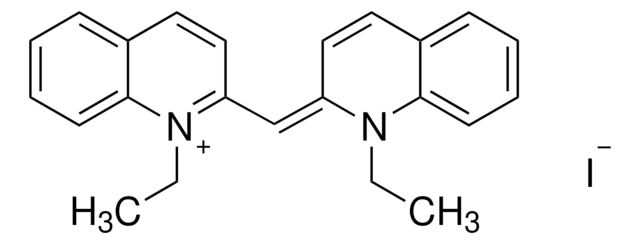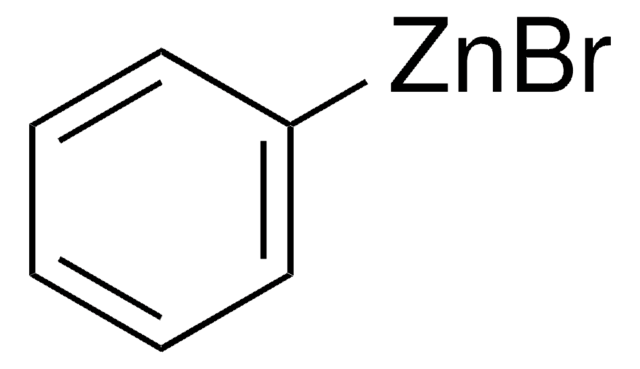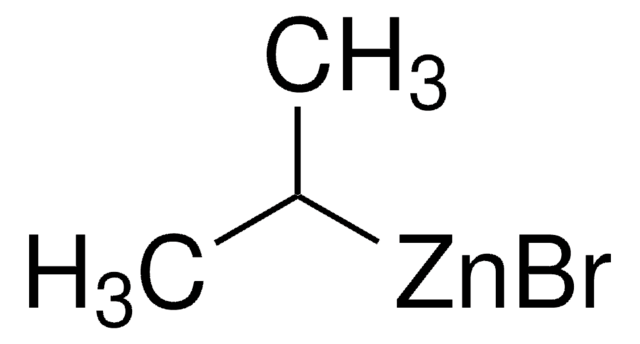417246
Dimethylzinc solution
1.0 M in heptane
Sinónimos:
Dimethylzinc
About This Item
Productos recomendados
formulario
liquid
Nivel de calidad
concentración
1.0 M in heptane
bp
44-46 °C
densidad
0.724 g/mL at 25 °C
cadena SMILES
C[Zn]C
InChI
1S/2CH3.Zn/h2*1H3;
Clave InChI
AXAZMDOAUQTMOW-UHFFFAOYSA-N
¿Está buscando productos similares? Visita Guía de comparación de productos
Categorías relacionadas
Descripción general
Dimethylzinc is a diorganozinc reagent and nucleophile used in the synthesis of propargylic amines.
Aplicación
- A catalyst with nickel for the stereoselective C−2 alkenylation and dialkenylation of pyridine derivatives by alkynes to give monoalkenylation products.
- A reagent with aldehydes and 2-methoxyaniline for the synthesis of enantioselective alkyl and aralkyl secondary amines via one-pot three-component coupling reaction in the presence of zirconium tetraisopropoxide.
- A methylating reagent for methylation of fluoroalkylated pyruvates in the presence of copper/chiral diphosphine catalyst.
Palabra de señalización
Danger
Frases de peligro
Clasificaciones de peligro
Aquatic Acute 1 - Aquatic Chronic 1 - Asp. Tox. 1 - Eye Dam. 1 - Flam. Liq. 2 - Pyr. Liq. 1 - Skin Corr. 1B - STOT SE 3 - Water-react 2
Órganos de actuación
Central nervous system
Código de clase de almacenamiento
4.2 - Pyrophoric and self-heating hazardous materials
Clase de riesgo para el agua (WGK)
WGK 3
Punto de inflamabilidad (°F)
30.2 °F - closed cup
Punto de inflamabilidad (°C)
-1 °C - closed cup
Equipo de protección personal
Faceshields, Gloves, Goggles
Elija entre una de las versiones más recientes:
¿Ya tiene este producto?
Encuentre la documentación para los productos que ha comprado recientemente en la Biblioteca de documentos.
Los clientes también vieron
Nuestro equipo de científicos tiene experiencia en todas las áreas de investigación: Ciencias de la vida, Ciencia de los materiales, Síntesis química, Cromatografía, Analítica y muchas otras.
Póngase en contacto con el Servicio técnico















